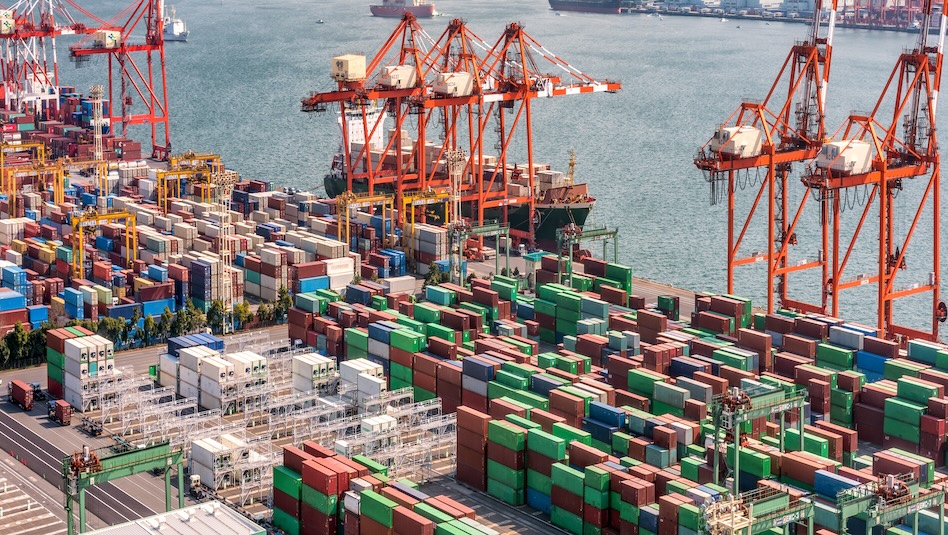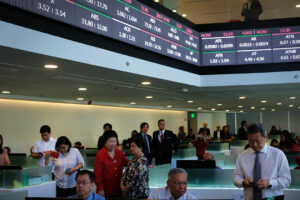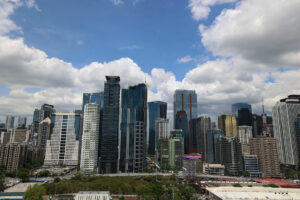The Philippines could still achieve the export target set under the Philippine Development Plan (PDP) this year if it is able to maintain its advantage amid the US reciprocal tariffs, an industry group said.
“Our target is the same, but we will not hit the target set under the Philippine Export Development Plan (PEDP),” Philippine Exporters Confederation, Inc. President Sergio R. Ortiz-Luis, Jr. told BusinessWorld on the sidelines of the group’s 2nd Quarter General Membership Meeting on Thursday.
“We are now following the target under PDP; hopefully we will hit USD 110 billion,” he added.
Under the PDP, total exports are expected to hit USD 113.42 billion this year.
On the other hand, the target under the PEDP is higher with exports projected to reach USD 163.6 billion this year.
“The semiconductors and services are doing well, but what will happen next will depend on Trump. Right now, we are all speculating,” he said.
“But so far, so good, and if the situation stays the same, we can expect growth from our semiconductor and electronics and information technology and business process management (IT-BPM) industries,” he added.
US President Donald J. Trump announced higher reciprocal tariffs on most of the country’s trading partners, with Philippine goods facing the second-lowest rate in Southeast Asia at 17%. However, the reciprocal tariffs have been paused for 90 days until July. A baseline 10% tariff remains in place.
According to Mr. Ortiz-Luis, the Semiconductor and Electronics Industries in the Philippines Foundation, Inc. (SEIPI) anticipates this year’s exports to reach the same level as in 2023.
“SEIPI gave us some assurance as it anticipates export revenues reaching USD 46 billion this year, driven by a robust global demand despite tariff challenges,” he said.
The IT-BPM sector’s export revenues are expected to hit USD 40 billion this year, Mr. Ortiz-Luis said.
“Further, despite projections that gross domestic product growth may be slower due to the US reciprocal tariffs, the Philippines is seen to outperform its Asian counterparts due to our robust consumer and services sector, compared to the investment and trade-driven economies in Asia,” he said.
“Having said that, and while we have entered into the uncertainties, risks, and challenges presented by the US tariff regime, the latest export performance in the country may be an indicator of things to come,” he added.
Citing data from the Philippine Statistics Authority (PSA), Mr. Ortiz-Luis said there has been a 7% annual increase in exports to USD 6.75 billion in April, driven by electronics, manufactured goods, and agricultural products.
“In the April performance, exports to the US also rose 10.6% to USD 1.03 billion, up from USD 971 million a year ago,” he said.
“Philippine exports to the US average about 20% of the country’s annual performance. Will this be affected by the reciprocal tariff? That is the question,” he added.
On the other hand, Mr. Ortiz-Luis said some sectors are not as bullish about their exports amid the reciprocal tariffs.
“Furniture, garments and textiles, and coconuts are not as bullish about their exports to the US because of the higher tariff, especially if their raw materials are sourced from economies that have been slapped with the bigger tariffs,” he said. “Unfortunately, for these sectors, the US comprises the bulk of the market.”
The US tariff policy shows the need for the Philippines to strengthen other markets and diversify where there are significant opportunities, Mr. Ortiz-Luis said.
In particular, he said that the Association of Southeast Asian Nations (ASEAN) members accounted for 15% or USD 11.02 billion of the country’s total export revenue.
The Philexport official said the government should review its positioning in the region amid the implementation of the ASEAN Economic Community Strategic Plan for 2026-2030.
“Serving as a five-year strategic roadmap, it aims to position our region as the world’s fourth-largest economic bloc by 2030, with a target to double the digital economy to an estimated USD 2 trillion,” he said.
“ASEAN and the rest of Asia indeed offer viable business propositions considering the supply-chain disruptions, high logistics costs, and regional productivity networks that we have already established here,” he added.
More FTA?
Mr. Ortiz-Luis said the country must also explore opportunities beyond the US and ASEAN by entering free trade agreements (FTAs).
“It is then timely that we have started with our FTA negotiations with the Middle East, Canada, and other countries that promise to open new and significant opportunities for our exporters,” he said.
“The Philippines has likewise formally submitted its application to join the Comprehensive and Progressive Agreement for Trans-Pacific Partnership this year,” he added.
However, he said that there is also a need to review the country’s existing FTAs after exports to South Korea declined in the first four months despite a bilateral FTA between the Philippines and Korea entering into force on Dec. 31.
“Philippine goods being shipped to South Korea saw a double-digit decline,” he said.
PSA data showed exports to Korea declined 25.5% to USD 1 billion in the January-to-April period, or four months after the FTA took effect.
Mr. Ortiz-Luis said that exporters are also facing domestic economic pressures that are slowing down the sector’s growth momentum, such as the proposed legislated wage hike. “Highlighting the broader negative economic implications, we instead keep reiterating to allow the wage boards to do their job and for the government to strengthen policies that stimulate job creation and sustain our economy,” he added.
Although the failed passage of the wage hike bill was welcomed by the exporters group, he said that there are a number of measures that the 19th Congress failed to approve, namely the Magna Carta for Micro, Small, and Medium Enterprises (MSMEs), the International Trade Maritime Act, the PhilPorts Act, and the National Quality Infrastructure.
He also said that there is a need to provide MSMEs with targeted funding for export promotion, market compliance and certification, research and development, and technology and innovation. — Justine Irish D. Tabile, Reporter







 DOWNLOAD
DOWNLOAD














